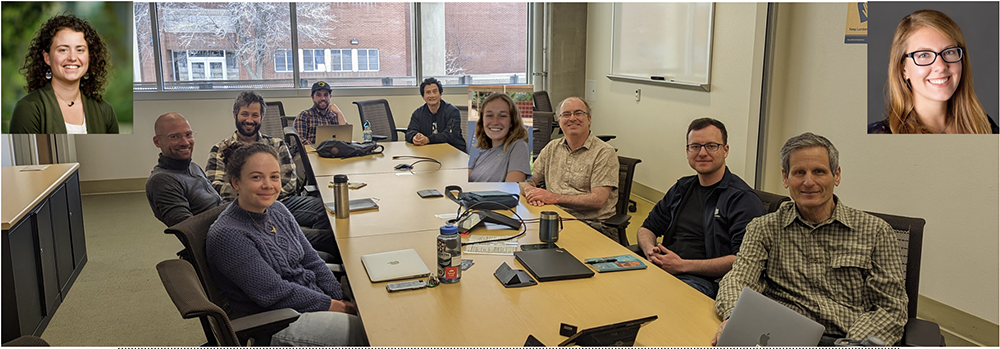News — A megadrought that occurred 4,200 years ago had catastrophic impacts, potentially wiping out early empires and leading to large-scale changes worldwide. It was so significant it marked a turning point in the Earth’s geologic history.
Or was it?
New research out of Northern Arizona University shows that while the 4.2 ka event did happen, its impacts may not have been globally catastrophic as previously thought. In fact, it may simply have been one of many events in the varied climate of the Holocene Era, which began about 11,700 years ago.
The study, published in , is unique not just for its surprising findings but for the way it was produced. Faced with more than 1,000 datasets, faculty at NAU created a graduate class that allowed students to participate in the research. The paper’s dozen co-authors range from NAU faculty to students to alumni who participated over several years.
“In 2018, this event was used as a new geologic marker to subdivide our current geologic epoch, the Holocene,” said lead author Nicholas McKay, an associate professor in the School of Earth and Sustainability. “This was good motivation to dig deeper into the large-scale evidence for the event, since we weren’t even sure this was a real thing, let alone something that should be used as a global marker.”
Finding the climate needle in the proverbial haystack
The answers they needed to lay in 12,000 years of climate data spanning the globe. The research team had to figure out how to analyze it.
The team developed an enhanced method to objectively detect and assess the significance of climate events in paleoclimate data, which allowed for a comprehensive examination of temperature and water changes throughout the Holocene.
As they combed through the data, a new narrative emerged: While the effects of the 4.2 ka megadrought showed up in some places, they didn’t show up in all places. Even where the researchers saw effects that could be attributed to that event, the effects looked different. They saw not one huge event that changed everything but rather a number of smaller events that impacted the local climate. Many locations did experience climate changes in this time period, McKay said, but those changes were not more widespread or significant than changes that occurred at other times throughout the Holocene.
[caption id="attachment_72719" align="alignleft" width="438"] Research team members Stéphanie Arcusa, Leah Marshall, Cody Routson, Dave Edge, Chris Hancock, Georgia Roberts, Michael Erb, Maurycy Zarczynski, Darrell Kaufman and Hannah Kolus. Not pictured: Nick McKay.[/caption]
Research team members Stéphanie Arcusa, Leah Marshall, Cody Routson, Dave Edge, Chris Hancock, Georgia Roberts, Michael Erb, Maurycy Zarczynski, Darrell Kaufman and Hannah Kolus. Not pictured: Nick McKay.[/caption]
The team found a few significant events outside of the 4.2 ka event. There was the well-known 8.2 ka event, a pronounced cold and dry period centered in the North Atlantic. There were also significant temperature changes during the Common Era, consistent with the Dark Ages Cold Period and Medieval Climate Anomaly.
The big takeaway was that abrupt changes in temperature and rainfall were common at local scales throughout the Holocene, and globally coherent events were rare. The other big takeaway: the importance of rigorous, data-driven approaches in understanding past climate variability.
“This research calls into question the use of the 4.2 ka event as a global geologic marker and provides a cautionary tale in interpreting local climate changes as globally significant,” said co-author Leah Marshall, a doctoral student in earth sciences and environmental sustainability. “Our results show that climate excursions occurred throughout the Holocene, and better understanding the timing, patterns and causes of these abrupt change events is important for future climate model projects.”
What this means for the future
This research sought to provide a better understanding of the past, but the results are much bigger than that: Knowing how climate has changed over millennia could help scientists understand how it will change in the future.
“This study suggests that natural changes in climate can occur on century timescales (200-400 years) in regions without occurring throughout the planet,” McKay said. “These natural changes are different than the massive changes being caused now by human-caused emissions in carbon dioxide, but future climate will be a combination of these natural changes with human-caused changes, and it’s important for us to understand both.”
The researchers published their analysis methods so future research can tackle these large datasets in investigating past climate. All in all, what’s come from the class is better than a grade for the students.
“What made this class exciting was being involved in the discussions about such a large dataset and learning more about how these synthesis studies are designed,” Marshall said. “That was new to me, since my research has generally focused on single sites. With a dataset this large and the new toolkit the co-authors developed, you can ask lots of interesting questions.”

